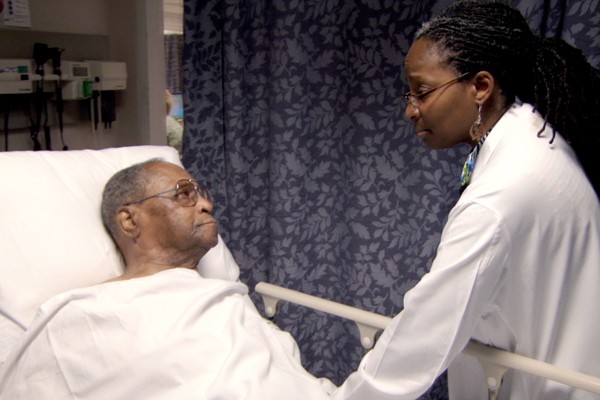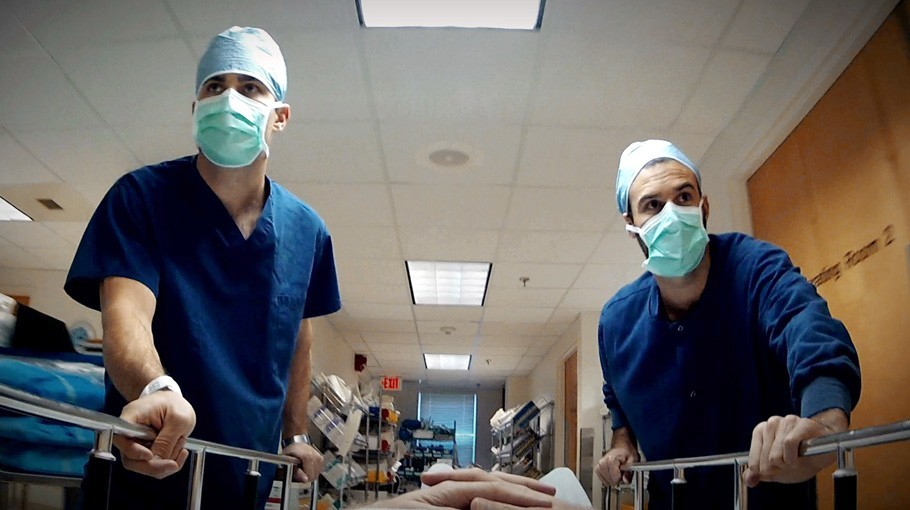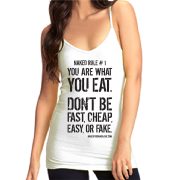The Facts:
– We spend over twice as much as other developed nations per person. Healthcare costs are rising so rapidly that they could reach $4.2 trillion annually, roughly 20% of our gross domestic product, within ten years.
– In our current system, healthcare companies — pharmaceutical, medical device manufacturers, insurance, and hospital chains — are getting rich while small businesses are getting crushed. Coverage for the average worker’s family costs small businesses $11,000 annually. That’s money that comes out of paychecks. Or bankrupts a business.
– Sixty-five percent of Americans are overweight or obese.
– America ranks number 50 in life expectancy.
– Americans are so laden with chronic illnesses – many of which are preventable – that we spend 75% of healthcare costs managing diseases we shouldn’t have.
“ESCAPE FIRE” The Fight to Rescue American Healthcare tackles one of the most pressing issues of our time: How can we save our badly broken healthcare system?
Naked Food Magazine interviewed Director Matthew Heineman about the issues:
Q. What is the root of the problem?
A. The players involved for the most part, are good people trying to make us healthier. But we’ve given them the wrong tools and the wrong incentives. We pay for diabetics to get a foot amputated when they are 60 years old, but we don’t pay for lifestyle counseling when they are 45 to prevent the disease from taking hold in the first place (not to mention that we subsidize unhealthy, fake food instead of fruit and vegetables).
Q. How did it get to be a “Fee-for-Service” System?
A. Everyone agrees that the system is broken. The system rewards quantity, not quality; and profit-driven care rather than patient-driven care. Hospitals brag to their stockholders about keeping their beds full, which is simply backwards. Hospitals should be paid to keep patients out of the hospital, not for signing up more and more patients. The film shows the example of a woman who goes through a number of cardiac arrests and stent procedures at an early age, which could have been avoided if she had been advised to take control of her health. Prevention should’ve taken place from the beginning, but the system encourages procedures as one of the Doctor’s financial incentives.
Q. Why is prevention not the goal in our health-care system?
A. The status quo is really strong. There are monetary benefits from keeping people sick, and this money goes to a few pockets. Also, insurance companies typically hold policies for less than 3 years so it doesn’t make financial sense for them to include preventive care. Insurance companies have to meet the expectations of their stockholders as well.
Q. 75% of diseases are considered to be lifestyle related, and one of the major issues is eating the wrong foods. However, Doctors are not trained in Nutrition. What is your take on that?
A. There are major issues in how doctors are taught. Doctors spend 4 hours in Nutrition education while it is a major lifestyle component. It is wrong. For example, in the Board of Cardiologists there isn’t one mention about nutrition or the effect on nutrition on heart disease. As a community and as a whole, we need to start paying more attention on nutrition and demand better choices.
Some of the big institutions are including healthier choices on their menus, which is an accomplishment, however, subsidized foods are increasingly providing the cheapest and worst possible food options.

Acording to the U.S. PIRG Education Fund, a consumer advocacy group, apples are the only fresh fruit or vegetable receiving significant federal subsidies. Since 1995 the entire complex of federal agricultural programs has spent only $262 million on apples, and even this modest support is an overstatement of the subsidies going to fresh apples — some of the apple crop is itself processed into forms like apple juice or applesauce which in turn may be sweetened with high fructose corn syrup. Of the $277 billion spent on farm subsidy programs since 1995, about $81.7 billion went to subsidize corn and $26.3 billion went for soybeans. In a sign of the political clout of the biggest producers, 75 percent of the all those subsidies have gone to just 3.8 percent of U.S. farmers. In contrast, the government has provided only $637 million for apples or vegetables. (Photo Property of Roadside Attractions)
Q. What can people do? What is your advice?
A. My goal is to transform the current system and the way people see it. We need a paradigm shift with rewards and incentives for people to make better health choices.
I have personally seen many people fired up to take control of their health which is great. We need to switch our mindset and become greater consumers on health. That consciousness extends to the products we buy because one third of healthcare products don’t improve health.
We’ve had the opportunity to the screen the film in many places around the country including the Pentagon. We’ve also held screenings in hundreds of medical institutions where people are recognizing the problem and they want to change.
Healthcare has become so political that change needs to happen at the local level to achieve a greater impact. Our goal is to address the issues with the film, hospital by hospital, clinic by clinic, individual by individual. Through a greater consciousness of people and institutions, we will create a more sustainable system into the 21st century.
The Film is available in select theaters, video on demand, and iTunes.
Help spread the word at www.escapefiremovie.com
Facebook: www.facebook.com/escapefire




























May 23, 2013
The field of health advocacy is rife with “fake obesity experts” who are milking the public for millions with advice they are unqualified to espouse. The scam is so rampant Vegsource produced a youtube video documenting it which can be viewed here: http://youtu.be/3I02aVkdi_M
Andrew Weil, an obese Chris Kringle media freak is included in this video. Any barker for an obesity cure must walk the walk before he talks the talk. Clearly, Andrew Weil is NOT qualified to address an obesity cure.
The film Escape Fire features Andrew Weil which destroys its credibility. It is beyond comprehension why the producer included a pathetic buffoon like Weil in what is otherwise an informative documentary. If this film is to be saved from the scrap heap it must be immediately edited to TAKE OUT Weil.
October 17, 2012
It was time someone spoke up about Health Care – It is definitely not about politics, it’s about the lives of all Americans… Great interview, people should focus on prevention instead of waiting till the worst happens